Abstract
In recent years leptospirosis has been shown to be an important cause of human febrile illness in Malaya. Studies were therefore undertaken to determine its animal reservoirs and the factors influencing spread of infection from them to man and domestic animals. This paper presents the board picture obtained. A wide range of animal species were trapped in forest localities, ricefield areas, areas of scrub and cultivation and in several towns and villages. The maintenance hosts of leptospirosis in Malaya appear to be mainly or entirely rats, although evidence of infection has been found throughout the animal kingdom. Some rat species have characteristics which suggest that they are better maintenance hosts than others. Evidence was found of practically every serogroup of leptospires infecting animals in Malaya. Altogether 104 strains were isolated and identified, and 155 animals were found to have serological evidence of infection. Of 1763 rodents examined, 194 had evidence of infection, and 41 of 1083 other animals. A serum survey of domestic animals showed the highest incidence of antibodies to be in goats and the lowest in oxen.
Full text
PDF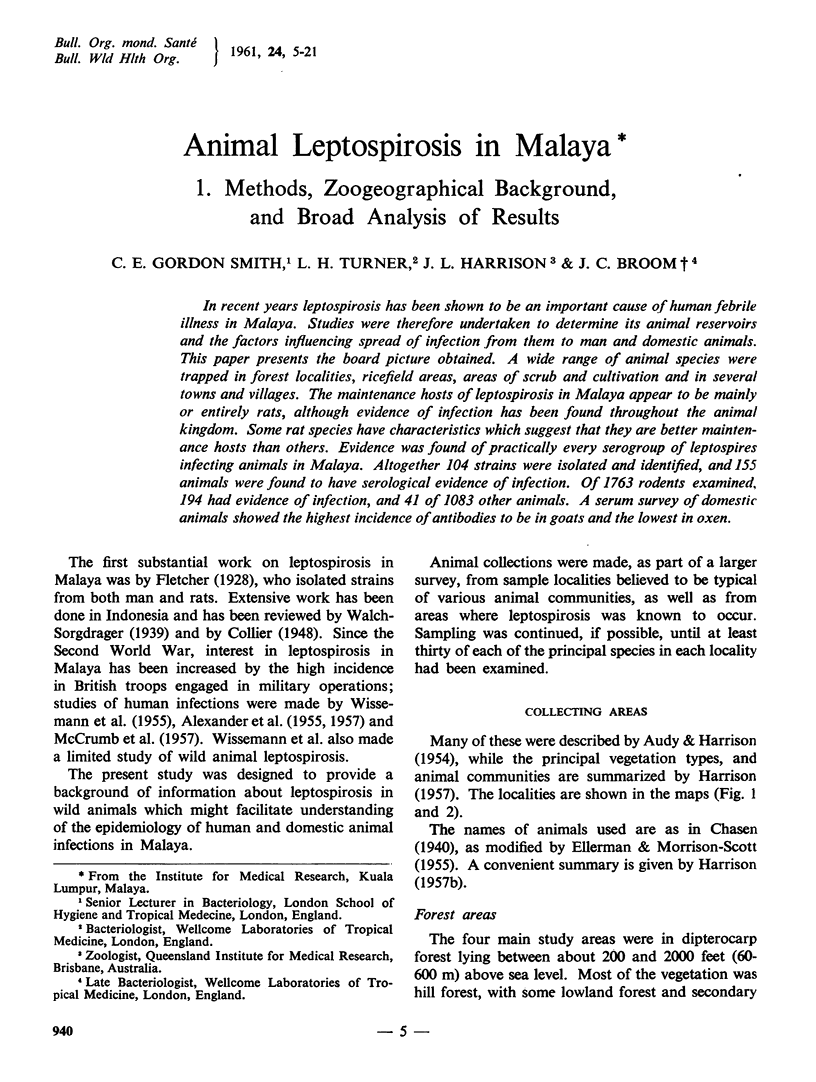
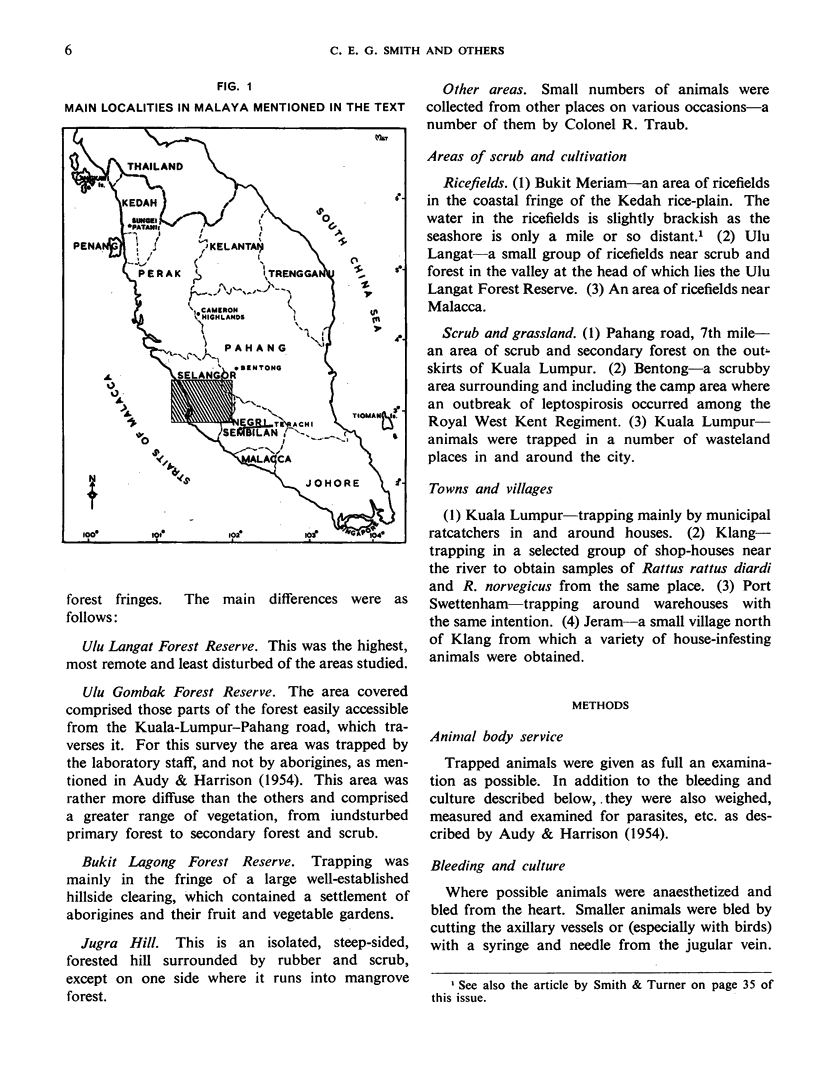
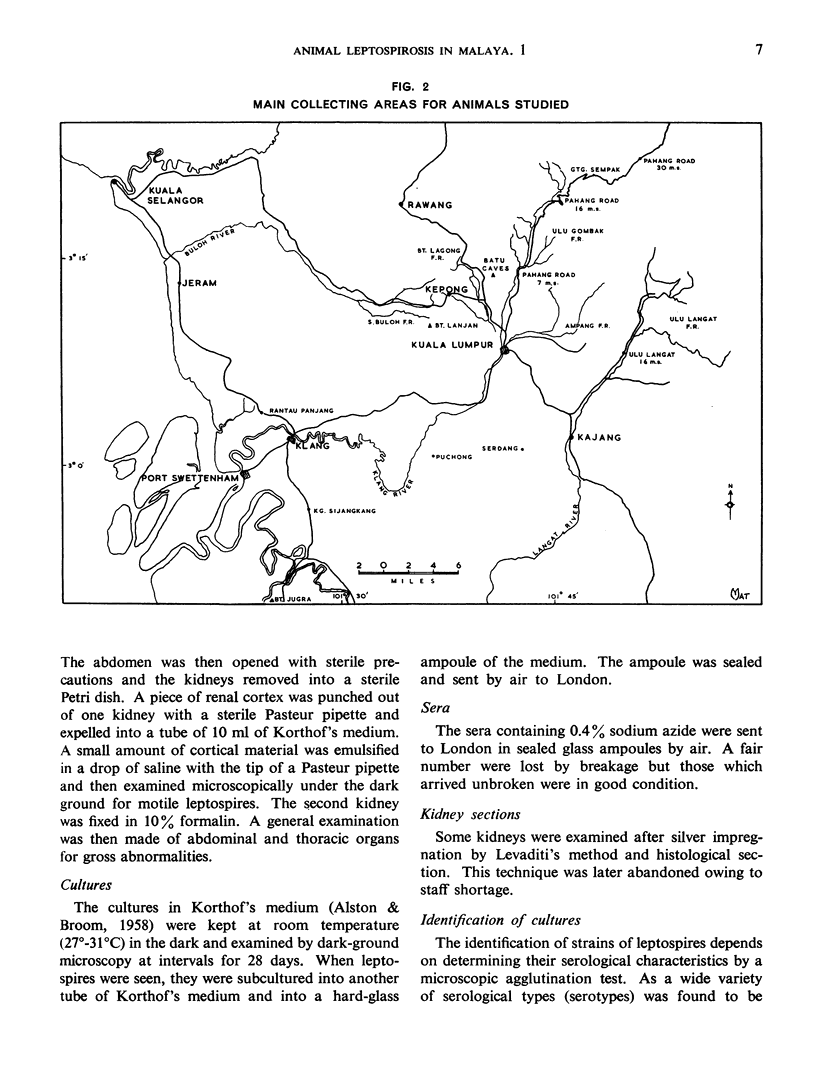
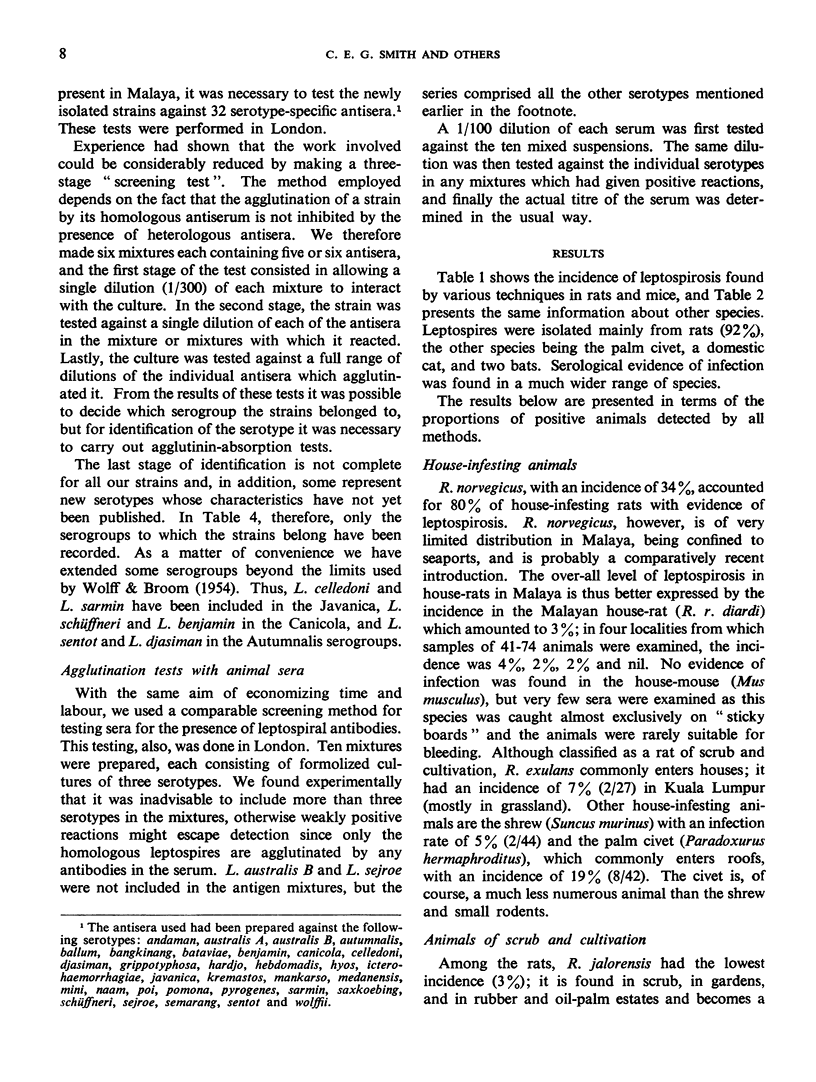
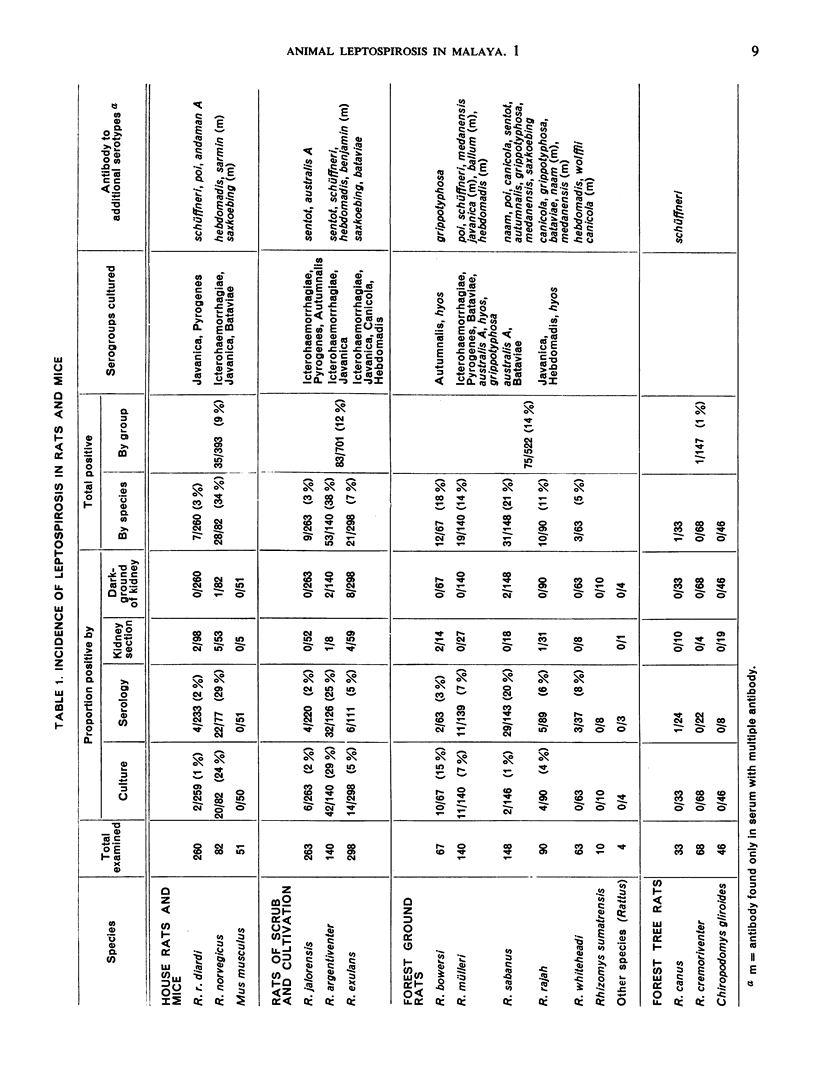
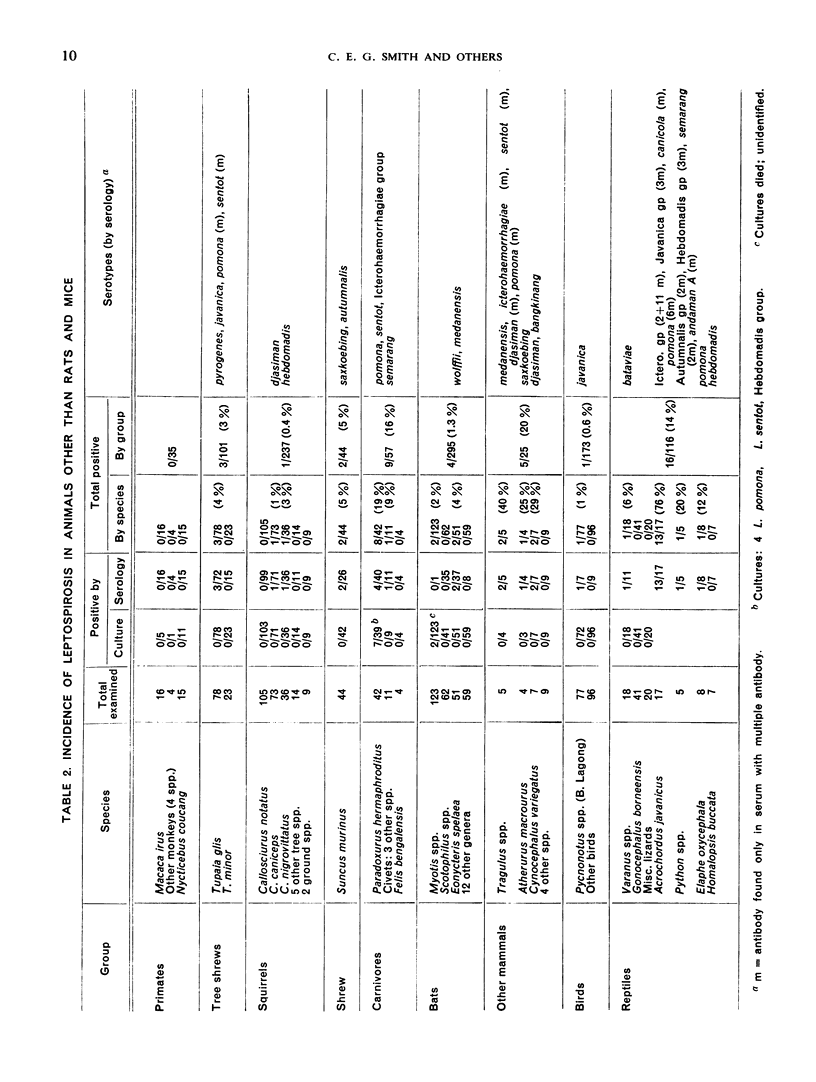
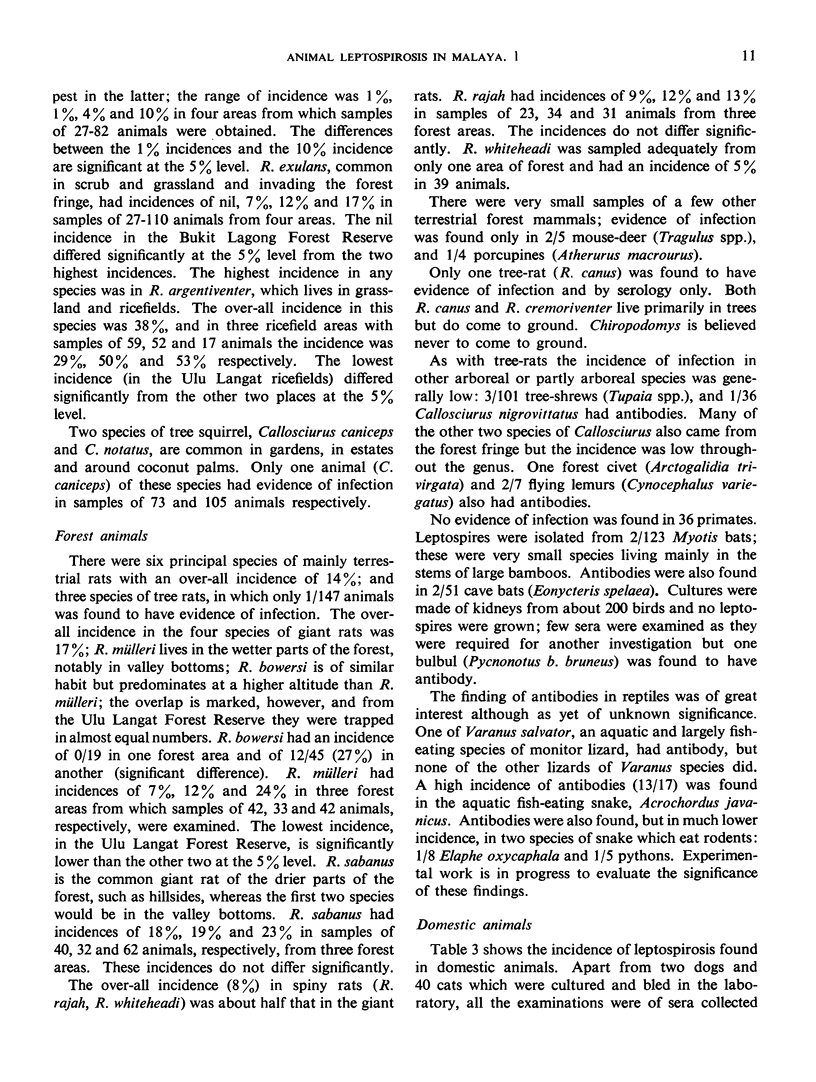
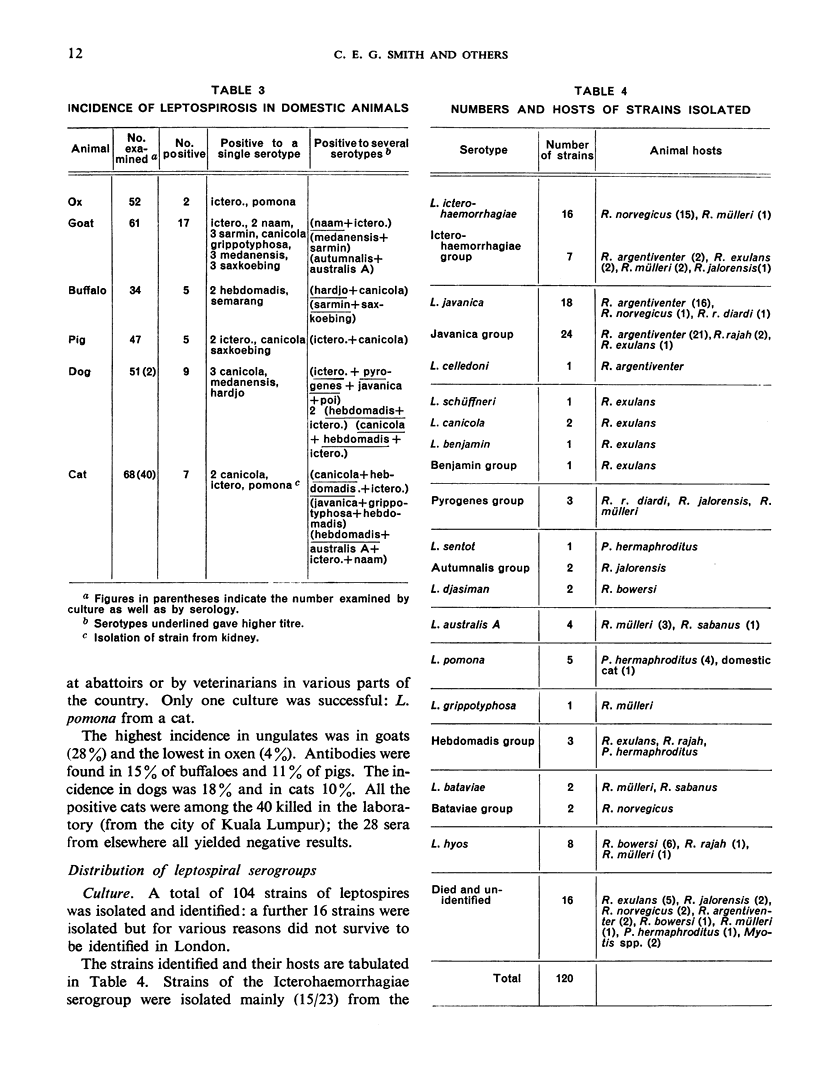
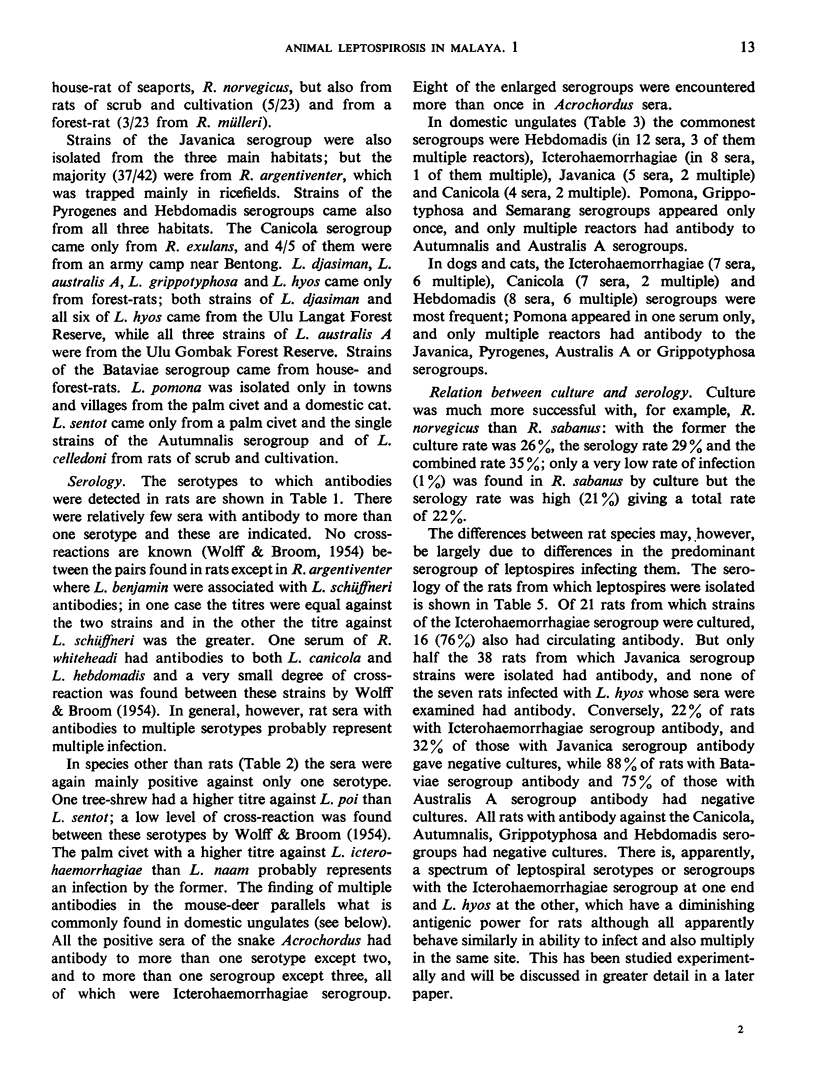
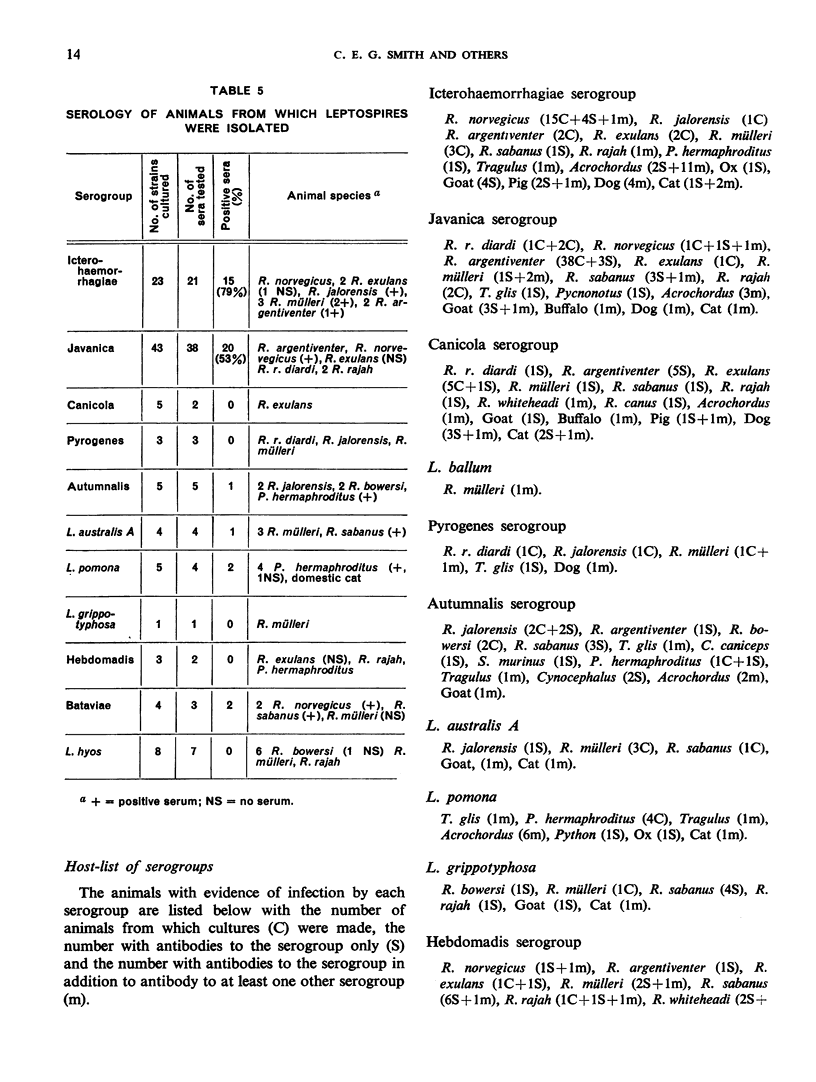
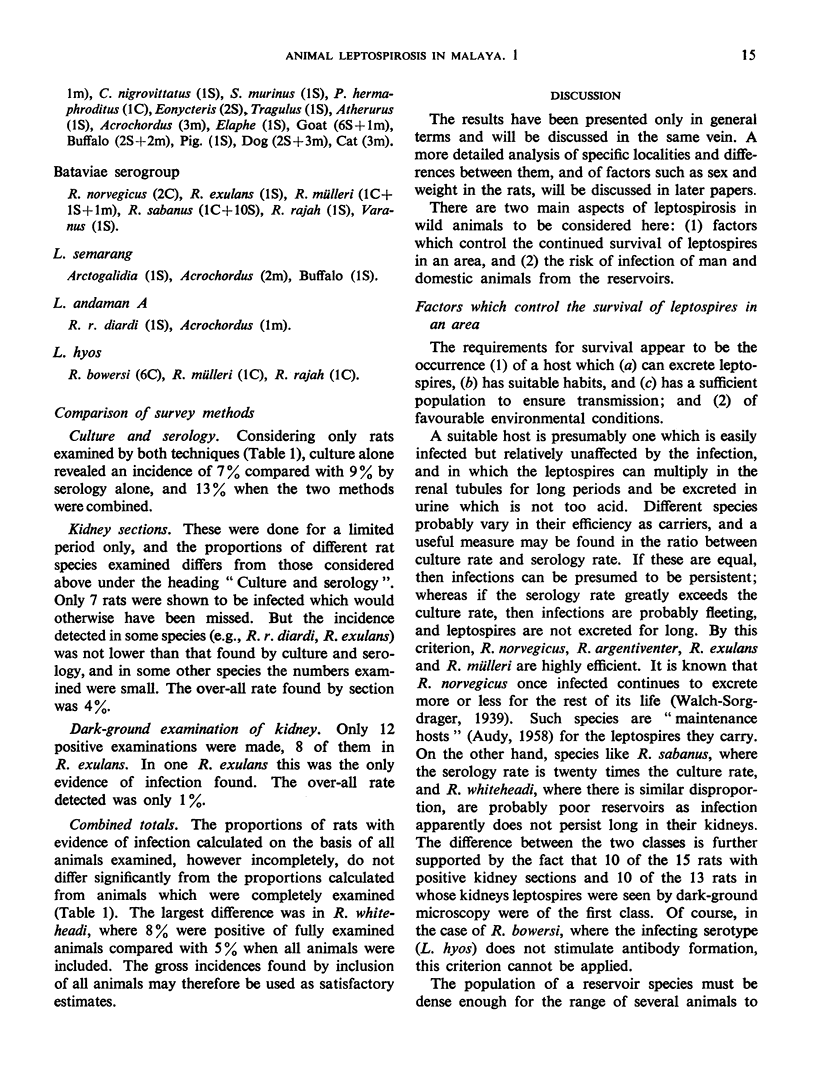
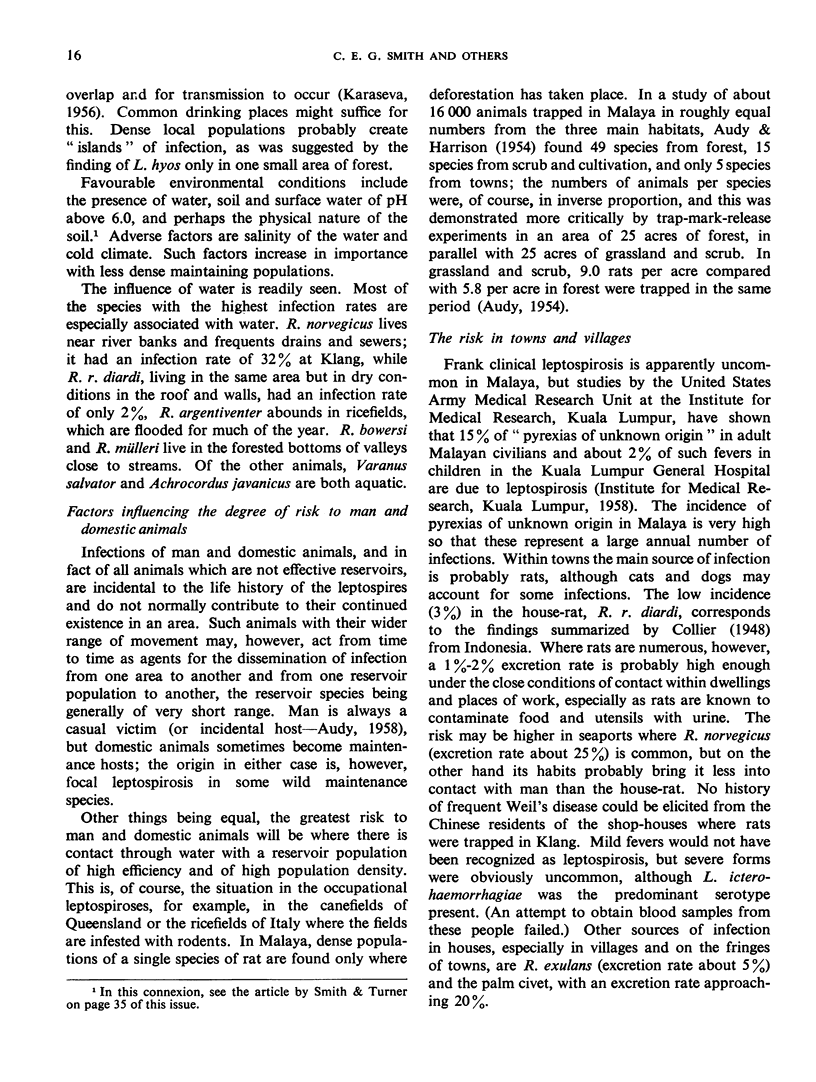
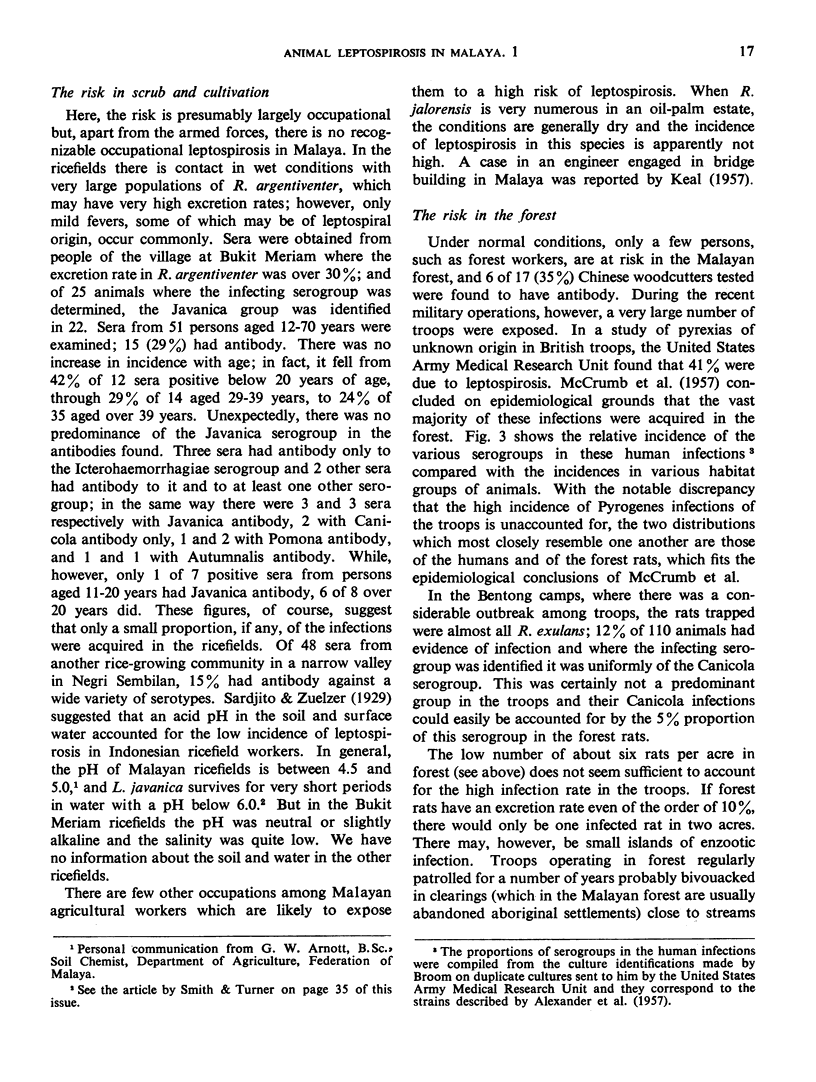
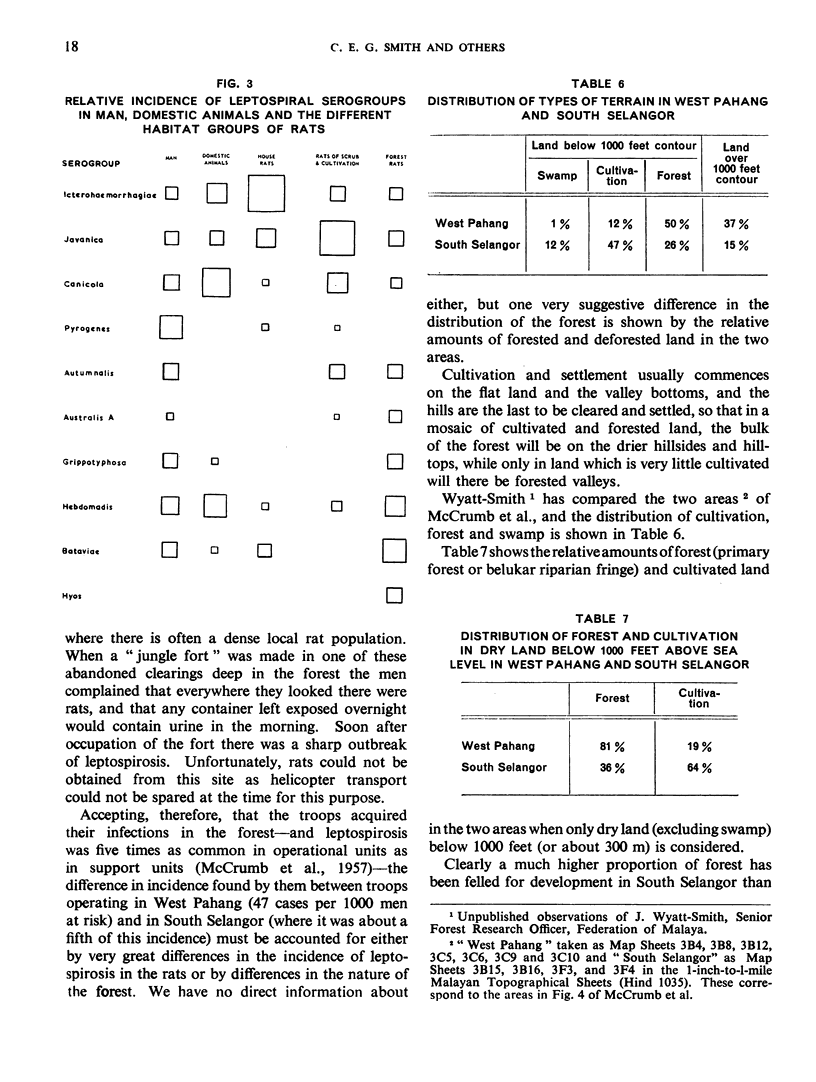
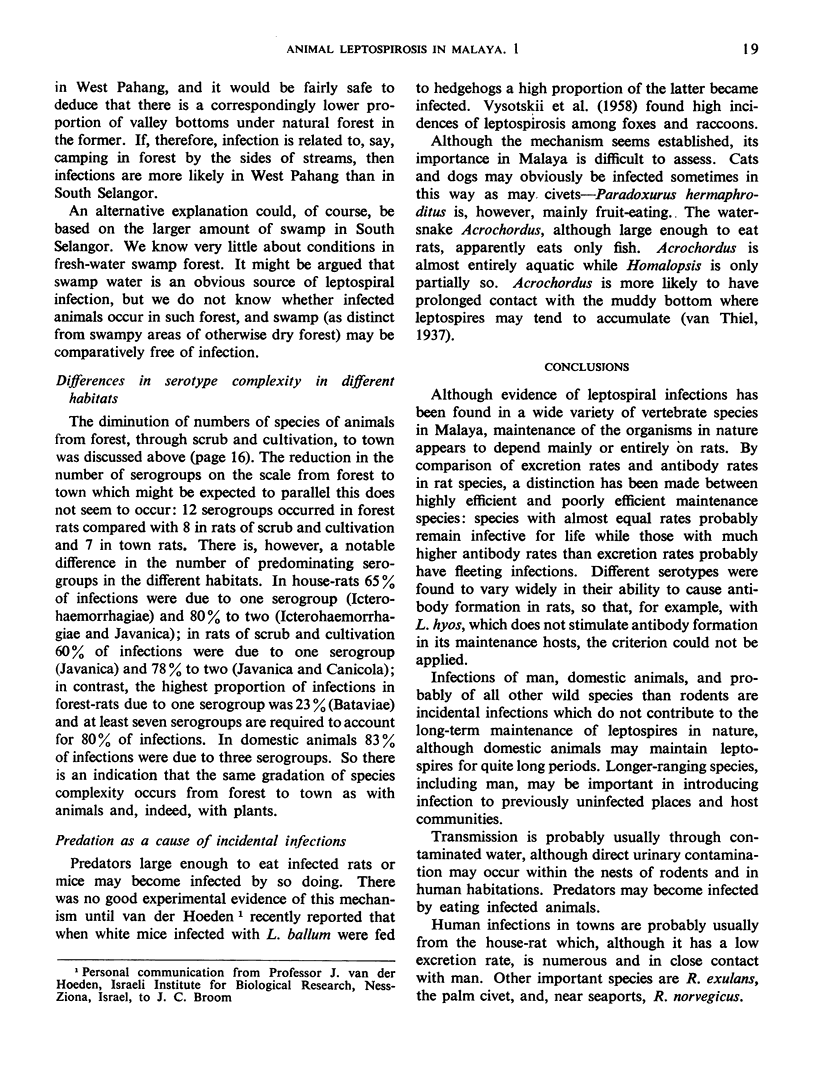
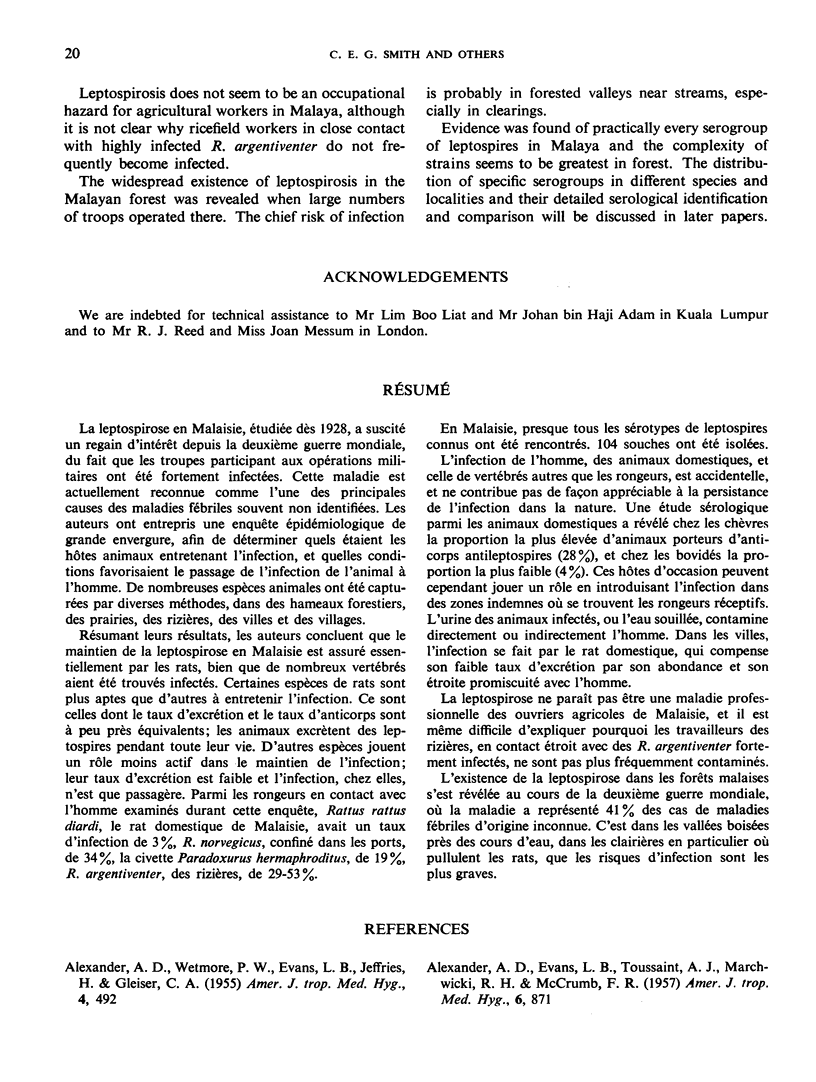
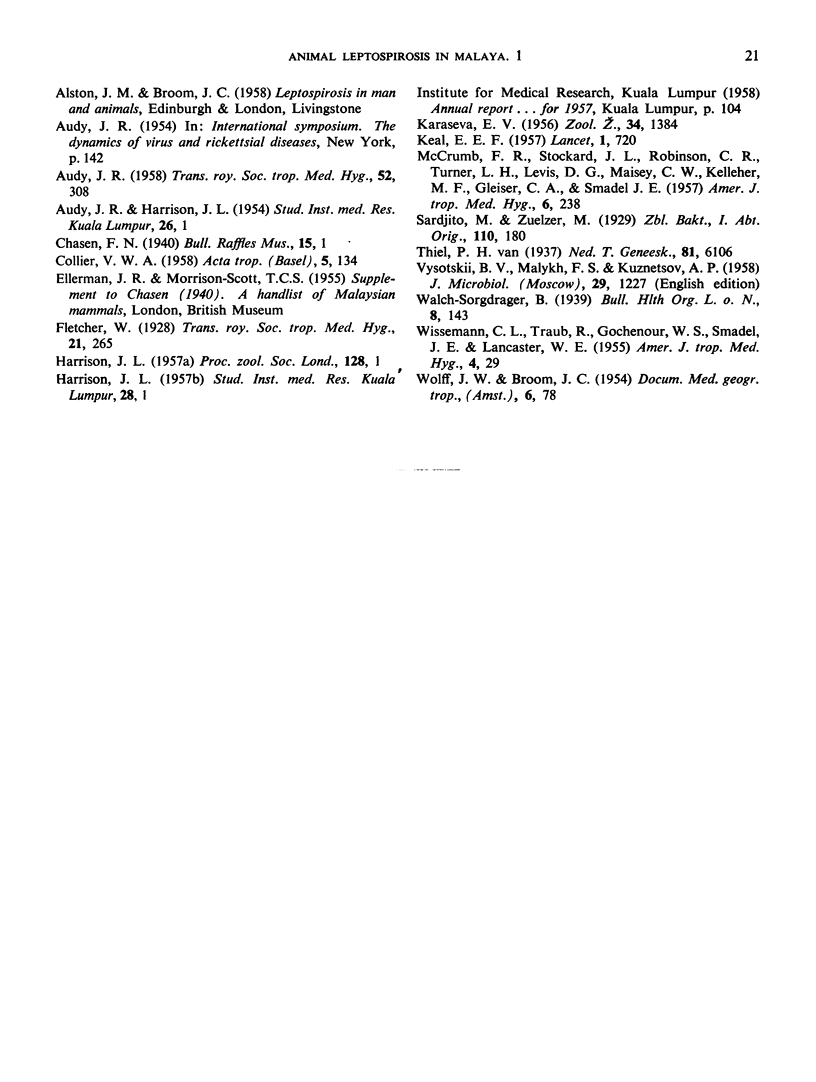
Selected References
These references are in PubMed. This may not be the complete list of references from this article.
- ALEXANDER A. D., EVANS L. B., TOUSSAINT A. J., MARCHWICKI R. H., McCRUMB F. R., Jr Leptospirosis in Malaya. II. Antigenic analysis of 110 leptospiral strains and other serologic studies. Am J Trop Med Hyg. 1957 Sep;6(5):871–889. [PubMed] [Google Scholar]
- ALEXANDER A. D., WETMORE P. W., EVANS L. B., JEFFRIES H., GLEISER C. A. Classification of leptospiral isolates from Malaya, Thailand and North Borneo. Am J Trop Med Hyg. 1955 May;4(3):492–506. doi: 10.4269/ajtmh.1955.4.492. [DOI] [PubMed] [Google Scholar]
- AUDY J. R. The localization of disease with special reference to the zoonoses. Trans R Soc Trop Med Hyg. 1958 Jul;52(4):308–334. doi: 10.1016/0035-9203(58)90045-2. [DOI] [PubMed] [Google Scholar]
- KEAL E. E. Leptospirosis in England due to foreign species. Lancet. 1957 Apr 6;272(6971):720–721. doi: 10.1016/s0140-6736(57)91173-x. [DOI] [PubMed] [Google Scholar]
- MCCRUMB F. R., Jr, STOCKARD J. L., ROBINSON C. R., TURNER L. H., LEVIS D. G., MAISEY C. W., KELLEHER M. F., GLEISER C. A., SMADEL J. E. Leptospirosis in Malaya. I. Sporadic cases among military and civilian personnel. Am J Trop Med Hyg. 1957 Mar;6(2):238–256. [PubMed] [Google Scholar]
- WISSEMAN C. L., Jr, TRAUB R., GOCHENOUR W. S., Jr, SMADEL J. E., LANCASTER W. E. Leptospirosis of man and animals in urban, rural and jungle areas of southeast Asia. Am J Trop Med Hyg. 1955 Jan;4(1):29–40. doi: 10.4269/ajtmh.1955.4.29. [DOI] [PubMed] [Google Scholar]


